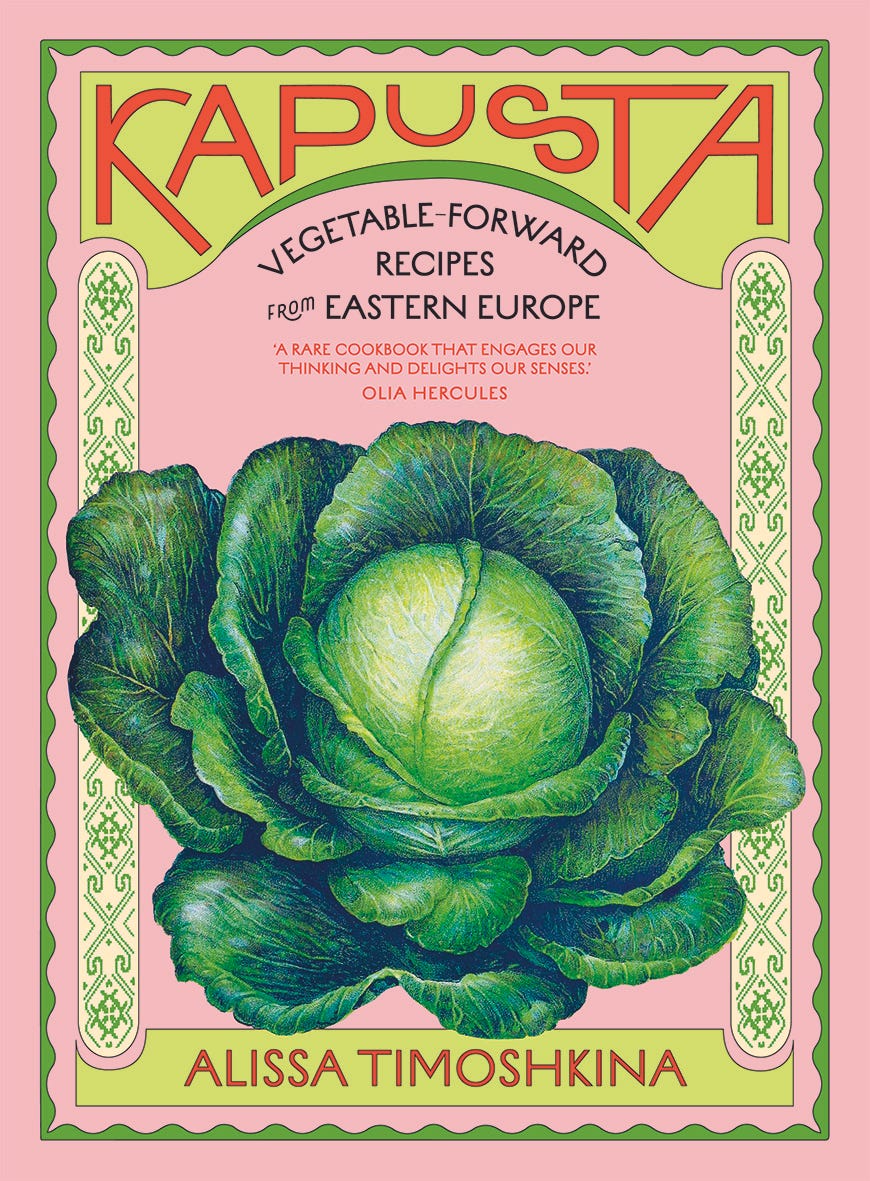When I was a kid, cabbage only appeared on our family table as a part of a New England boiled dinner: corned beef and root veg and wedges of cabbage, simmered and largely unadorned.
I had not yet learned my way around a jar of mustard. The leaves were sweet. The meal was quiet.
But cabbage has range—and the brassica has stepped into its star power on the pages of cookbooks and the tables of restaurants in recent years. It’s served grilled, with a luscious, smoky emulsion of mussels and a flurry of fresh horseradish; it’s dressed “au poivre,” because of course it is.
I fully believe that cabbage can be thrilling. But sometimes, when I’ve hacked off a wedge from a head of cabbage, though, I’m not sure what to do with the rest. Slaw? Salad? Roasted hunks? Just leaving it to stare out at me menacingly from the fridge? Maybe you’ve been there.
Here are a few cabbage recipes that have caught my eye lately; dishes that’ll bring some flavor into these lingering weeks of winter.
Ixta Belfrage’s Roasted Cabbage with Mango and Harissa Sauce (Reprinted from Mezcla in The New Zealand Herald)
Joe Yonan’s Soba Noodles with Cabbage and Fried Almonds (from Mastering the Art of Plant-Based Cooking, excerpted in Martha’s Vineyard Magazine)
Sohla El-Waylly’s Cashew Milk–Braised Cabbage With Crunchy Chile Oil (Food52)
Danny Garcia’s Charred Cabbage Wedges with Anchovies and Parmesan (Food + Wine)
Cabbage Adobada (Masienda)
Nik Sharma’s Braised Cabbage Bucatini
Nagi Maehashi’s Pea, Cabbage, Parmesan, and Mint Salad (RecipeTin Eats)
Ali Slagle’s Sheet-Pan Cabbage With Kielbasa and Beans (NYT Cooking)
Jenny Rosenstrach’s Peanutty Cabbage and Tofu (Dinner, a Love Story)
Zoe Barrie Soderstrom’s Caramelized Cabbage Shakshuka (shared by
Maangchi’s Spicy Pork and Vegetables over Rice / Jeyuk-Deopbap
Justine Doiron’s Baked Kale (and Cabbage) Salad With Crispy Quinoa
Kenji López-Alt’s Osaka-Style Okonomiyaki (Serious Eats)
Marcella Hazan’s Rice and Smothered Cabbage Soup (Food52)
Eric Kim’s Cheesy Cabbage Tteokbokki (NYT Cooking)
Elaine Khosrova’s Winter Slaw With Apples, Cheddar, and Walnuts (Culture)
Hetty McKinnon’s Really Good (or Addictive) Cabbage (To Vegetables, With Love)
Roxana Jullapat’s Vegan Posole Verde (adapted from Mother Grains in The Washington Post)
Speaking of cabbage, if you scroll down, you’ll find a recipe from one of the prettiest new books I’ve seen recently—Kapusta: Vegetable-Forward Recipes from Eastern Europe by Alissa Timoshkina. Alissa’s cabbage fritters get a bit of spring-in-the-winter flavor from frozen peas and fresh dill. They’re exactly what I want to eat right now, cabbage already in the fridge or no.
Win a copy of Kapusta
To enter, just make sure you’re subscribed to this newsletter and simply leave a comment on this post by Wednesday, February 19. Winner will be alerted by DM and email—be sure to check your messages!
18+, no purchase necessary. Giveaway not sponsored or administered by Substack or Instagram. Ends February 19, 2025.
Catch up on The Dinner Plan podcast
When you make a purchase through a link in this newsletter, it helps to support The Dinner Plan. (Buying any of the guest-recommended books on this Bookshop list does the same!)
A no-cost way to support: Tune in to the Dinner Plan podcast! It would mean so much to me if you’d make sure you hit follow wherever you listen. Here are a few cozy episodes to start with:
Jenny Rosenstrach’s Best Advice for Part-Time Plant-Based Eating
Julia Turshen Won’t Make Lasagna for a Meal Train
Crispy, Gooey, Cheesy Bread Dumplings With Luisa Weiss
Cabbage, Pea, and Dill Fritters
Excerpted with permission from Kapusta by Alissa Timoshkina, published by Quadrille, a division of Penguin Random House UK.
Fritters are an entire culinary genre in Eastern European cuisine. Quick and simple to make, they require no more than a handful of basic ingredients while providing flavour, sustenance and comfort. A whole range of (root) vegetables can be used to make a fritter; potato, beetroot, carrot and courgette (zucchini) being the most popular. Cabbage, albeit less of a top contender, is by far my favourite. Whatever the vegetable you choose, the one thing you must enjoy (aside from the uber-satisfying golden crunch) is a side of cooling sour cream for dipping!
Makes approximately 10
100g (3⁄4 cup) frozen peas
1⁄2 medium white cabbage, weighing approx. 450g (1lb)
1⁄2 tablespoon fine salt, plus extra to taste
3–4 spring onions or scallions
1 medium bunch of dill
2 eggs
4 tablespoons all-purpose flour, plus extra if needed
Vegetable oil, for shallow frying
Sour cream, to serve
Start by defrosting the peas by submerging them in boiled water.
Finely shred the cabbage on a mandoline (or thinly slice), put into a bowl with the fine salt and let it sit while you finely chop the spring onions and the dill.
Massage the cabbage a little with your hands, until most of the juices are released. Strain, squeezing out as much liquid as possible, and return to the bowl together with the spring onions and dill.
Drain the peas and add them to the same bowl.
In a separate bowl, whisk the eggs with a pinch of salt and stir in the flour to create the batter.
Pour the batter into the larger bowl with the vegetables and mix well, with a fork. If the mix is too runny, add another tablespoon of flour.
Heat enough oil in a frying pan for shallow frying (4–6 tablespoons, depending on the size of your pan).
Using your hands, form around 1 1⁄2 heaped tablespoons of the mixture in to a fritter shape, and shallow-fry for 5–6 minutes on each side over a medium heat, until golden and crisp.
Remove and let cool on paper towel to absorb excess oil, then serve with some sour cream while hot or at room temperature.







I love dill. I love cabbage. That’s the comment!
Wow! My love for cabbage runs deep! Thank you so many recommendations! Can’t wait to get the book and try this recipe! ❤️❤️